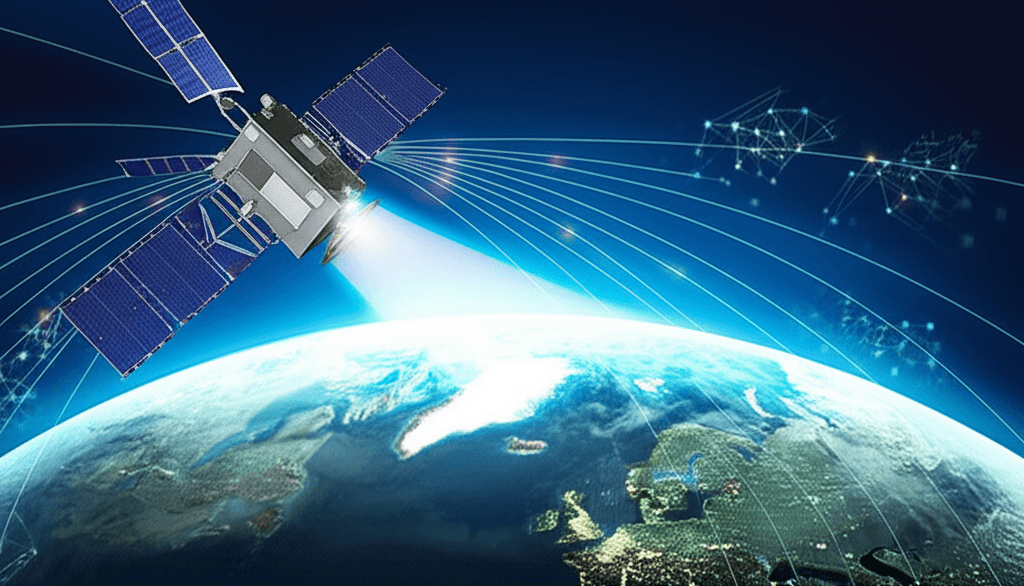GalaxEye Unveils Multi-Sensor Satellite, Boosting AI with All-Weather Data
Indian space-tech leader GalaxEye unveils a 0.5m resolution, all-weather satellite, powering global defense and AI-driven insights.
June 19, 2025

GalaxEye, a burgeoning Indian space-tech startup, has announced the development of its second satellite, a move poised to significantly enhance the availability of high-resolution geospatial data for a myriad of applications, including those powered by artificial intelligence. This new satellite, slated for a late 2026 or early 2027 launch, will boast a remarkable near 0.5-meter resolution, a substantial improvement over its predecessor and a critical capability for defense, disaster management, and urban planning sectors. The development underscores a growing global demand for precise and timely Earth observation data, a field where AI is becoming increasingly indispensable for extracting actionable insights from vast datasets. This advancement signals a maturing of the private space technology sector in India and its growing ambition to compete on a global scale.
The forthcoming satellite represents a significant technological leap for GalaxEye.[1] It is being built entirely in-house and is designed to offer not only sharper imaging but also a rapid revisit time of less than three days.[1] This frequent monitoring capability is crucial for tracking dynamic situations like natural disasters, troop movements, or changes in urban infrastructure. The near 0.5-meter resolution will enable the identification of smaller objects and more detailed analysis, a key requirement for military surveillance and for insurance companies assessing property damage after catastrophic events. This new satellite will build upon the foundation of GalaxEye's first satellite, the 'Drishti Mission', which is scheduled to launch later in 2024.[1] The Drishti Mission, with a resolution of 1.25 meters, will serve as a crucial proof of concept for the company's proprietary technology stack.[1] This includes a unique sensor system and a data processing pipeline that has already undergone extensive testing through over 500 drone flights and other spaceflight missions.[1]
At the core of GalaxEye's technological innovation is its pioneering work in multi-sensor satellite imaging. The company is developing the world's first satellite to carry a combination of Synthetic Aperture Radar (SAR) and multispectral optical sensors on the same platform.[2][3] This "SyncFusion" technology is a game-changer because it overcomes the limitations of traditional optical satellites, which are often hindered by cloud cover and require daylight.[4][5] SAR technology can penetrate clouds and operate day or night, providing all-weather, 24/7 imaging capabilities.[3][5] By fusing data from both sensor types, GalaxEye aims to provide a comprehensive and uninterrupted stream of intuitive imagery.[3][5] The potential applications of this fused data are vast, from detecting camouflaged military assets and monitoring crop health to tracking urbanization and detecting surface changes on the Earth.[3] The company has already demonstrated its SAR capabilities through an indigenous drone-based system.[4]
The strategic vision for GalaxEye extends beyond single satellite launches to the establishment of a constellation of five satellites.[6][2] This network will enable the company to capture imagery of any point on Earth within 24 hours, providing near-real-time monitoring capabilities.[6] Such a capability is highly valuable for a range of industries. For example, in agriculture, it can enable precision farming by providing timely data on crop health and soil moisture. In the maritime sector, it can be used for vessel tracking and monitoring illegal fishing. The company's geospatial platform, GalaxEye Blue, is already being tailored to provide market insights for the aquaculture industry by combining satellite imagery and AI to forecast supply and monitor water quality for shrimp farming.[2][7] This focus on delivering "data-as-a-service" solutions highlights the company's understanding of the importance of not just collecting data, but also making it easily accessible and actionable for end-users.[8]
To fuel its ambitious plans, GalaxEye, founded in 2021 by alumni of the Indian Institute of Technology Madras, has successfully raised significant funding from a diverse group of investors.[6][8][9] The company has secured a total of $14 million over several funding rounds, with its Series A round closing at $10 million.[9][10] Key investors include MountTech Growth Fund, Infosys, Speciale Invest, Mela Ventures, and ideaForge.[6][11] This financial backing is crucial for funding the research and development, manufacturing, and launch of its satellites. The company has also forged strategic partnerships to accelerate its growth. A collaboration with US-based SkyFi will integrate GalaxEye's advanced multi-sensor data into SkyFi's user-friendly platform, making it more accessible to a global customer base.[12][13] Another key partnership with Florida-based an partnership with Florida-based impulso.space is set to facilitate the launch of the Drishti Mission via SpaceX.[2][14] Furthermore, a Memorandum of Understanding with the Indian National Space Promotion and Authorisation Centre (IN-SPACe) grants GalaxEye access to the cutting-edge laboratories and testing facilities of the Indian Space Research Organisation (ISRO), a significant endorsement and a practical boost for the startup.[4][15]
In conclusion, GalaxEye's development of a second, more powerful satellite is a clear indicator of the company's rapid progress and the increasing sophistication of India's private space industry. By pioneering multi-sensor technology and focusing on delivering high-resolution, all-weather geospatial data, the company is positioning itself to be a significant player in the global Earth observation market. The direct implications for the AI industry are profound, as the vast and complex datasets generated by GalaxEye's satellite constellation will require advanced AI and machine learning algorithms to unlock their full potential. This synergy between advanced space technology and artificial intelligence promises to revolutionize decision-making across a wide spectrum of sectors, from national security and disaster response to agriculture and urban development. The success of startups like GalaxEye will not only contribute to India's 'Make in India for the World' initiative but also democratize access to valuable geospatial insights, empowering governments and businesses globally.[15][12]